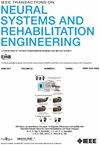Long-Term Gait-Balance Monitoring Artificial Intelligence System for Various Terrain Types
IF 4.8
2区 医学
Q2 ENGINEERING, BIOMEDICAL
IEEE Transactions on Neural Systems and Rehabilitation Engineering
Pub Date : 2024-11-19
DOI:10.1109/TNSRE.2024.3502511
引用次数: 0
Abstract
A long-term gait-balance monitoring system for various terrain types was developed using an inertial measurement unit (IMU) and deep-learning model. The system aims to identify unstable gait caused by lower-limb degeneration to prevent fall-related injuries. Unlike previous studies that have only focused on gait stability in flat terrain walking, the proposed system is also capable of analyzing stability on stairs and slopes. A lightweight, nine-axis IMU was used for data collection, and a combined convolutional neural network with gated recurrent unit model was implemented on the portable Raspberry Pi Zero 2 W for predicting Berg balance scale (BBS) scores. The BBS scores and gait data were then wirelessly transmitted to a cloud provider for long-term data storage. The system is as small and lightweight as a baseball and can monitor users for extended periods. The system can identify abnormal balance scores to provides physicians with long-term gait information, assisting their analysis and decision-making. This prevents falling and the corresponding consumption in healthcare resources that comes with fall-related injuries.适用于各种地形的长期步态-平衡监测人工智能系统
利用惯性测量单元(IMU)和深度学习模型,开发了一套适用于各种地形的长期步态平衡监测系统。该系统旨在识别由下肢退化引起的不稳定步态,以预防与跌倒相关的伤害。与以往只关注平地行走步态稳定性的研究不同,该系统还能分析楼梯和斜坡上的步态稳定性。该系统使用轻便的九轴 IMU 进行数据采集,并在便携式 Raspberry Pi Zero 2 W 上实现了一个具有门控递归单元模型的卷积神经网络,用于预测伯格平衡量表(BBS)的评分。BBS 评分和步态数据随后以无线方式传输到云提供商进行长期数据存储。该系统像棒球一样小巧轻便,可以对用户进行长时间监测。该系统可以识别异常平衡评分,为医生提供长期步态信息,帮助他们进行分析和决策。这可以防止跌倒,并避免与跌倒相关的伤害所带来的相应医疗资源消耗。
本文章由计算机程序翻译,如有差异,请以英文原文为准。
求助全文
约1分钟内获得全文
求助全文
来源期刊
CiteScore
8.60
自引率
8.20%
发文量
479
审稿时长
6-12 weeks
期刊介绍:
Rehabilitative and neural aspects of biomedical engineering, including functional electrical stimulation, acoustic dynamics, human performance measurement and analysis, nerve stimulation, electromyography, motor control and stimulation; and hardware and software applications for rehabilitation engineering and assistive devices.

 求助内容:
求助内容: 应助结果提醒方式:
应助结果提醒方式:


